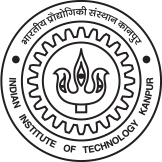
Prerequisites: None
3-1-0-11
Course Contents
Module I: Life with Oxygen
The aim of this module is to understand how our life is dependent on oxygen. We will start with the fundamentals related to dioxygen and need for its activation. We will then talk about its usefulness in various biological activities and applications.
Module II: Metals and Medicine
Dmitri Ivanovich Mendeleev in 1869 delivered a remarkable contribution to arrange chemical elements in the Periodic table. This module starts with Nature’s selection of elements from Periodic Table. It will provide a brief overview of metals used in the ancient times and today as therapeutic and diagnostic agents. Will discuss on the Rosenberg’s accidental landmark discovery of cisplatin as blockbuster anticancer drug. Lectures will also provide mechanistic action of the drug and the current status.
Module III: Electron Transfer Process
Nobel Prize in Chemistry in 1983 has been given to Henry Taube for his outstanding work on the mechanisms of electron transfer reactions, especially in metal complexes. We will discuss various electron transfer processes and how our life is dependent on that!
Module IV: Catalysis and Sustainability
Catalysis is one of prime field which has attained more number of Nobel prizes (20! at least) wherein the fundamental role of catalyst and its design play a critical role. Here, catalytic activities of few selected and important catalysts will be discussed along with their industrial applications. In addition, recent development on Green Chemistry for chemical synthesis and sustainable chemical processes will be highlighted.
Module V: Inorganic Polymer
An overview of important compounds used in rubber, adhesives, ceramic materials, sealant and inorganic polymers will be discussed.
Module VI: Inorganic Materials
A large number of new generation materials, such as network structures, molecular (nano)machines and molecular (nano)devices based on supramolecular chemistry and molecular self‐assembly (Nobel prizes in 1982 and 2016). In addition, we will also discuss selected materials used for Magnetic, Optical, Conducting and Storage materials.
Topics
Current Course Information
Instructor(s):
Number of sections:
Tutors for each section:
Schedule for Lectures:
Schedule for Tutorial:
Schedule for Labs:
Books and References
- Inorganic Chemistry-Principles of Structure and Reactivity, 4thEdn., J. E. Huheey, E. A. Keiter and R. L. Keiter, Harper-Collins, NY, 1993
- Advanced Inorganic Chemistry, 6thEdn., F. A. Cotton, G. Wilkinson, C. A. Murillo and M. Bochmann, Wiley, 1999
- Concepts and Models of Inorganic Chemsitry, 3rdEdn., B. Douglas, D. McDaniel and J. Alexander, John Wiley, New York. 1993
- Concepts and Models of Inorganic Chemsitry, 3rdEdn., B. Douglas, D. McDaniel and J. Alexander, John Wiley, New York. 1993
- Supramolecular Chemistry, J-M. Lehn, VCH, Weinheim, 1995
- Supramolecular Chemistry, J. W. Steed and J. L. Atwood, John-Wiley and Sons, Ltd., 2000
- Bioinorganic Chemistry, I. Bertini, H. B. Gray, S. J. Lippard & J. S. Valentine, Viva Books Pvt. Ltd., 2004.
- Shriver and Atkins Inorganic Chemistry, 5thEdn., Oxford University Press, 2009.
- Organotransition Metal Chemistry: From Bonding to Catalysis, 1stEdn., J. Hartwig, 2010
- Molecular Magnetic Materials: Concepts and Applications, Editors(s): B. Sieklucka and D. Pinkowicz, Wiley-VCH, 2016
- Molecular Magnetic Materials: Concepts and Applications, Editors(s): B. Sieklucka and D. Pinkowicz, Wiley-VCH, 2016



